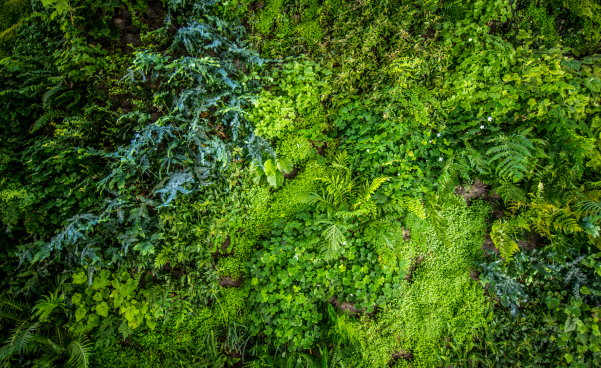
Why is virtual architecture often so familiar? Why is the facade of a new German skyscraper shaped like a zipper? And how does a Vietnamese factory help create cleaner air in a dense industrial area? Find out in this month's news roundup.
With its striking green appearance, the Jakob Factory is a lush oasis in a desert of gray concrete. The building's façade is littered with layers of plants, making it a curiosity in the dreary industrial park it sits in, near the Vietnamese metropolis of Ho Chi Minh City. The greenery has a cooling effect in many ways: it not only brightens up the landscape, but also protects from rain and sun and purifies the air in this densely developed commercial area.
The Jakob Rope Systems factory, specializing in the manufacture of custom-made steel mesh, is part of a huge industrial area in Vietnam's largest city. The many concrete-covered factories in the area have a negative environmental effect: they impede water drainage and can increase temperatures, damaging the fragile ecosystem. The vertical arrangement of the Jakob Factory, designed by G8A Architects and Rollimarchini Architects, is a real boon for the area: it reduces the overall footprint of the building and creates space for gardens and green courtyards. The manufacturing halls of the factory are constantly ventilated by the breeze that enters through the openings in the façades. Vegetation also contributes to reducing atmospheric temperature through evaporation, which acts as air purifiers and binders of dust particles.

Facade of a factory stacked with plants purifies the air in Vietnam

Why virtual architecture is always familiar
Virtual worlds like the Metaverse are a unique opportunity to unleash our imagination: digital infrastructures are not concerned with the laws of physics and designers are not limited by the voice of reason. It's the ultimate in architectural freedom, but somehow digital designers don't feel compelled to go all-out. Why do they keep making virtual universes that look real?
The answer lies in the familiarity principle: a psychological phenomenon that describes our tendency to prefer things we know. We just like what we already know, be it food, music, design or architecture.
Get to know Germany's new skyscraper: the RKM 740 tower in Düsseldorf-Heerdt. The project by J. Mayer H. Architects and the façade consultant Ebener is part of a large campus along the Rhine River, in which living quarters join the workspaces of various healthcare facilities.
The characteristic “zipper” façade is made of perforated metal and functions as a curtain that shades the interiors. With its smooth curves and zipper design, it strategically opens and closes depending on the orientation of the building. “On the east, south and west sides of the building, the undulating shell opens up generously, while offering shade and protection from the wind. On the north side, the façade is closed to isolate the sound of traffic.

J. Mayer H. wraps the newly completed Düsseldorf tower with a “zipper” façade
 Manufacturers
Manufacturers